Airtime for the chestnuts
Now that the polytunnel is up, I can plant the chestnuts in a protected environment, without hard frosts and no wind chill.
The best roots develop when you plant a chestnut on the location where the tree will stand the rest of it's life. However, most people want to purchase a grafted tree to replant into their garden or agroforestry system. Therefore, I want to grow trees with lots of roots in all directions, so that they have a high success rate when transplated.
The best way I know is to use "air pruning beds" or "air-pots". The principle is that the roots grow down onto a grid, where it encounters free air. This makes the tap-root stop growing and the seed starts to shoot out new roots in different directions. After a year, these trees can be planted out in the ground, to gain more strenght, and one or two years later be re-planted by the customers at the final location.
This year, I built an air-pruning table out of some leftover lumber.
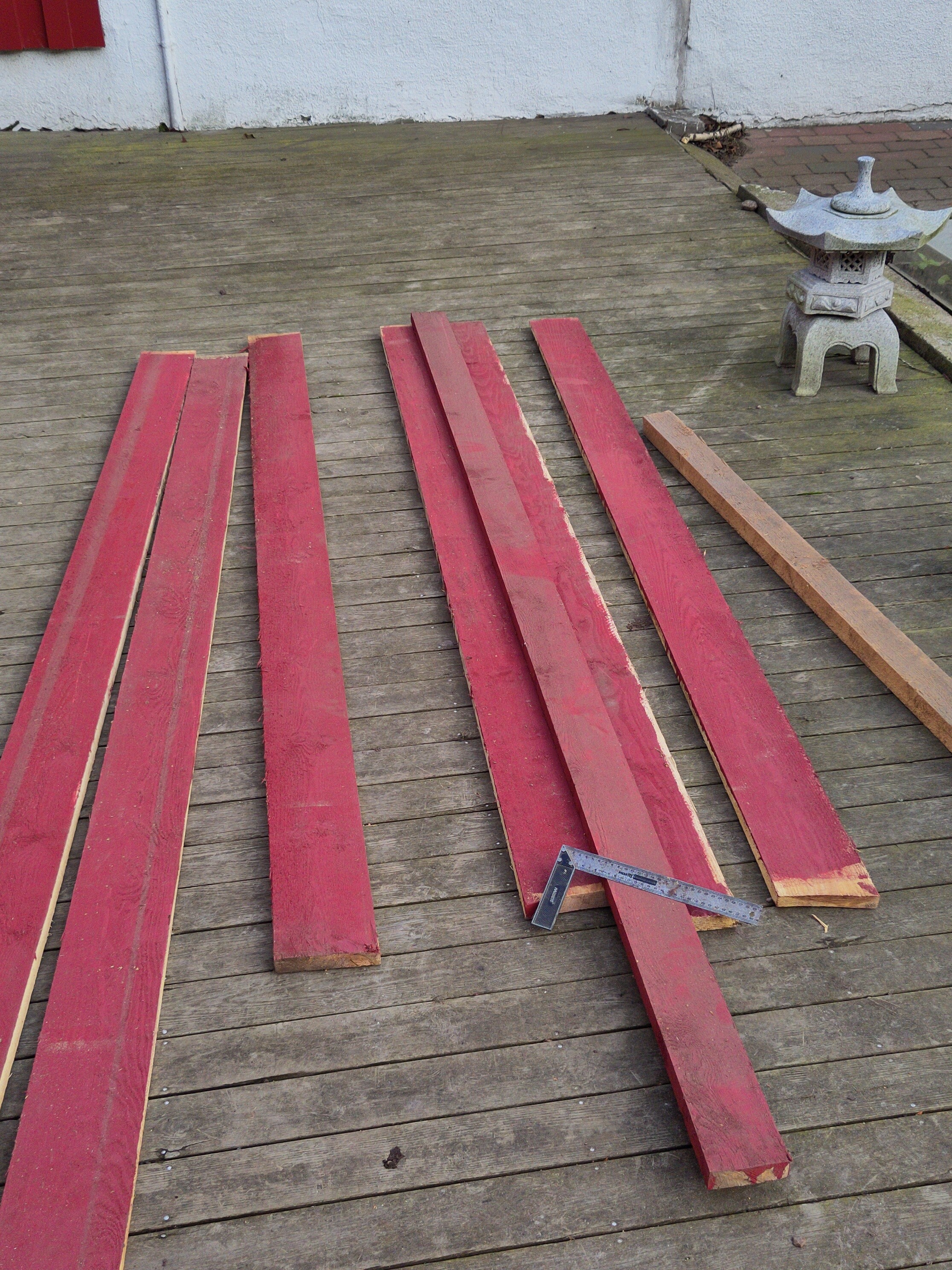 The leftover lumber and some steel mesh
The leftover lumber and some steel mesh
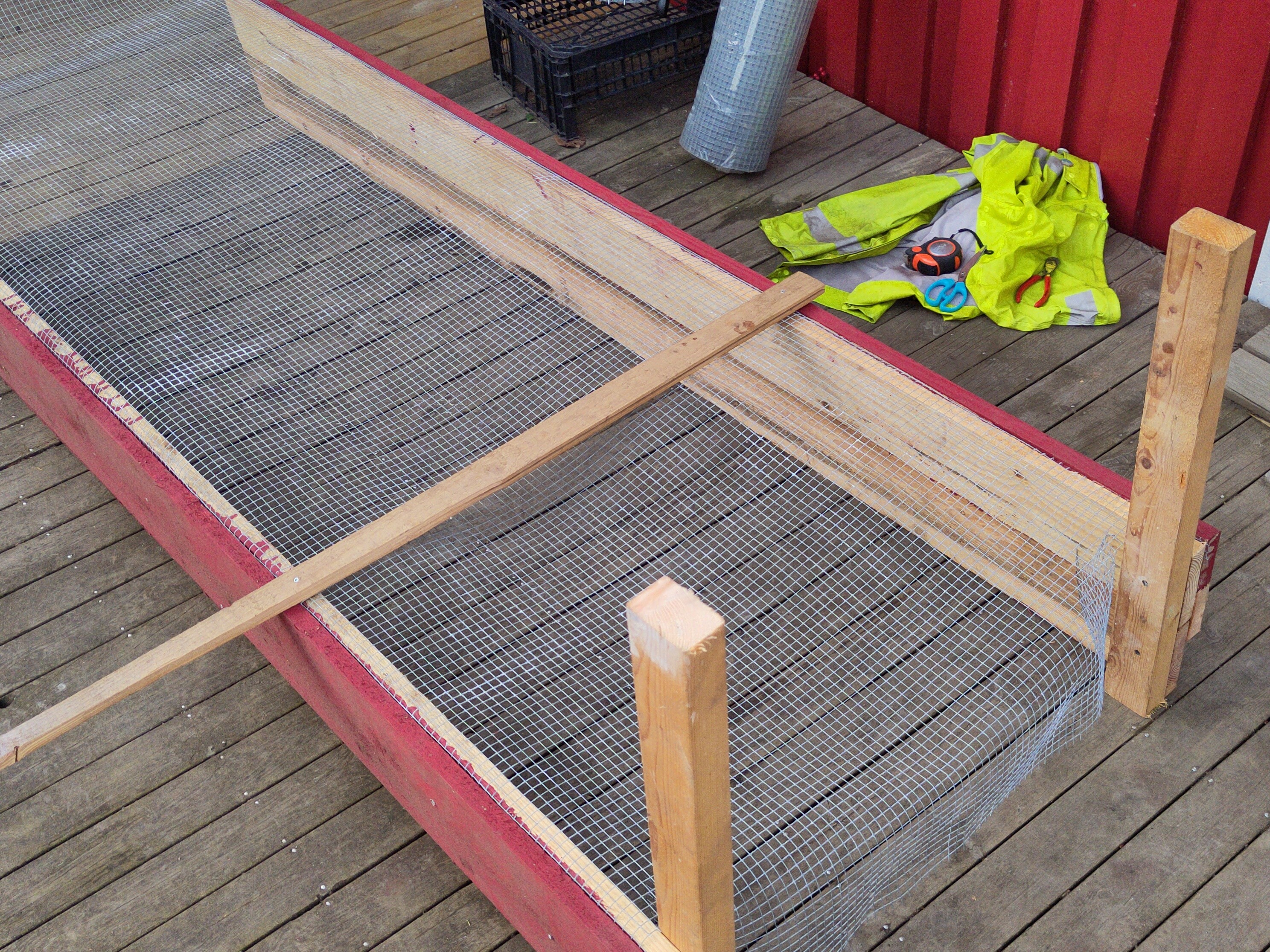 The frame was screwed together.
The frame was screwed together.
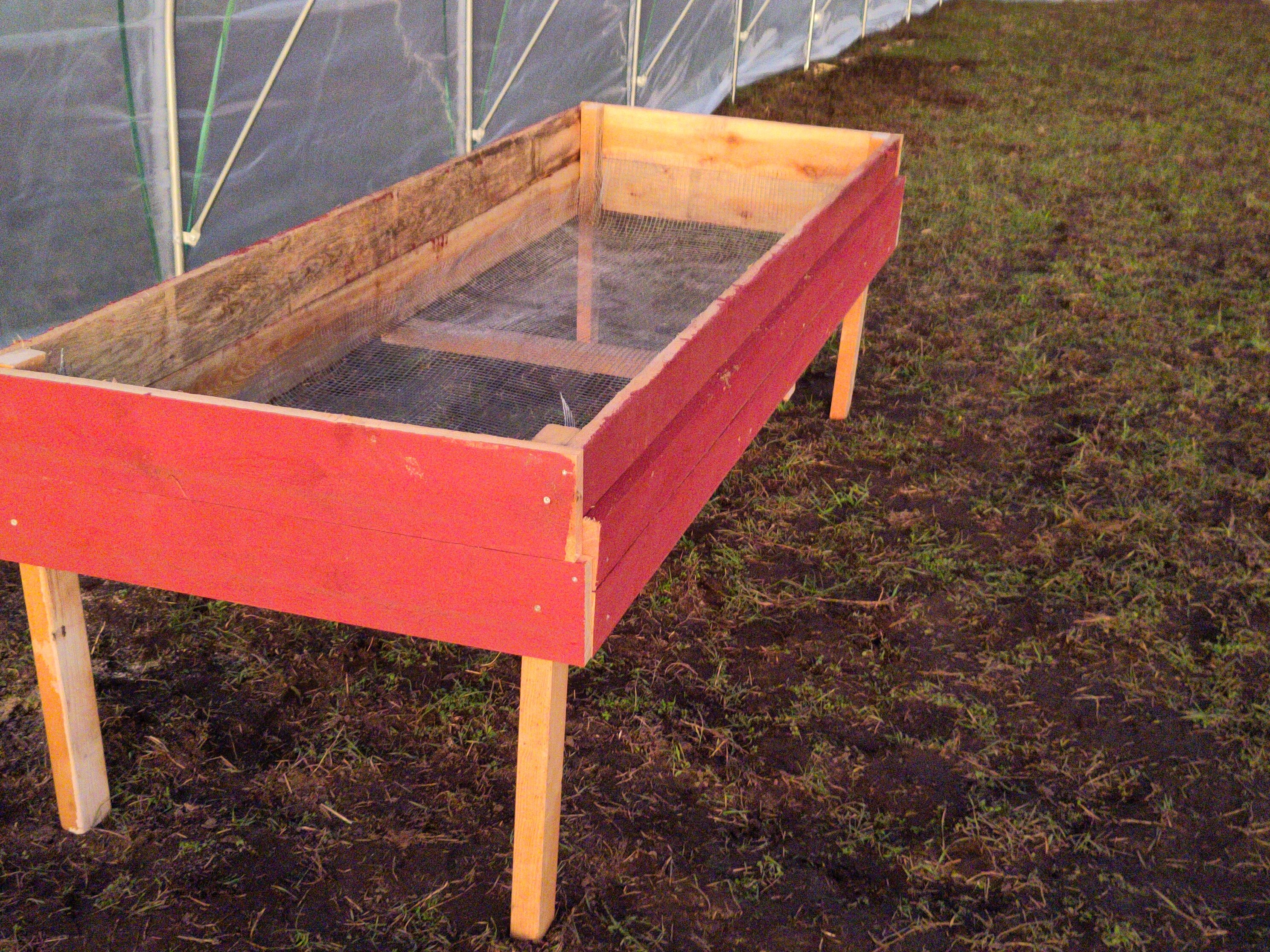 The table, in the high tunnel. Ready to be filled with soil and chesnuts
The table, in the high tunnel. Ready to be filled with soil and chesnuts
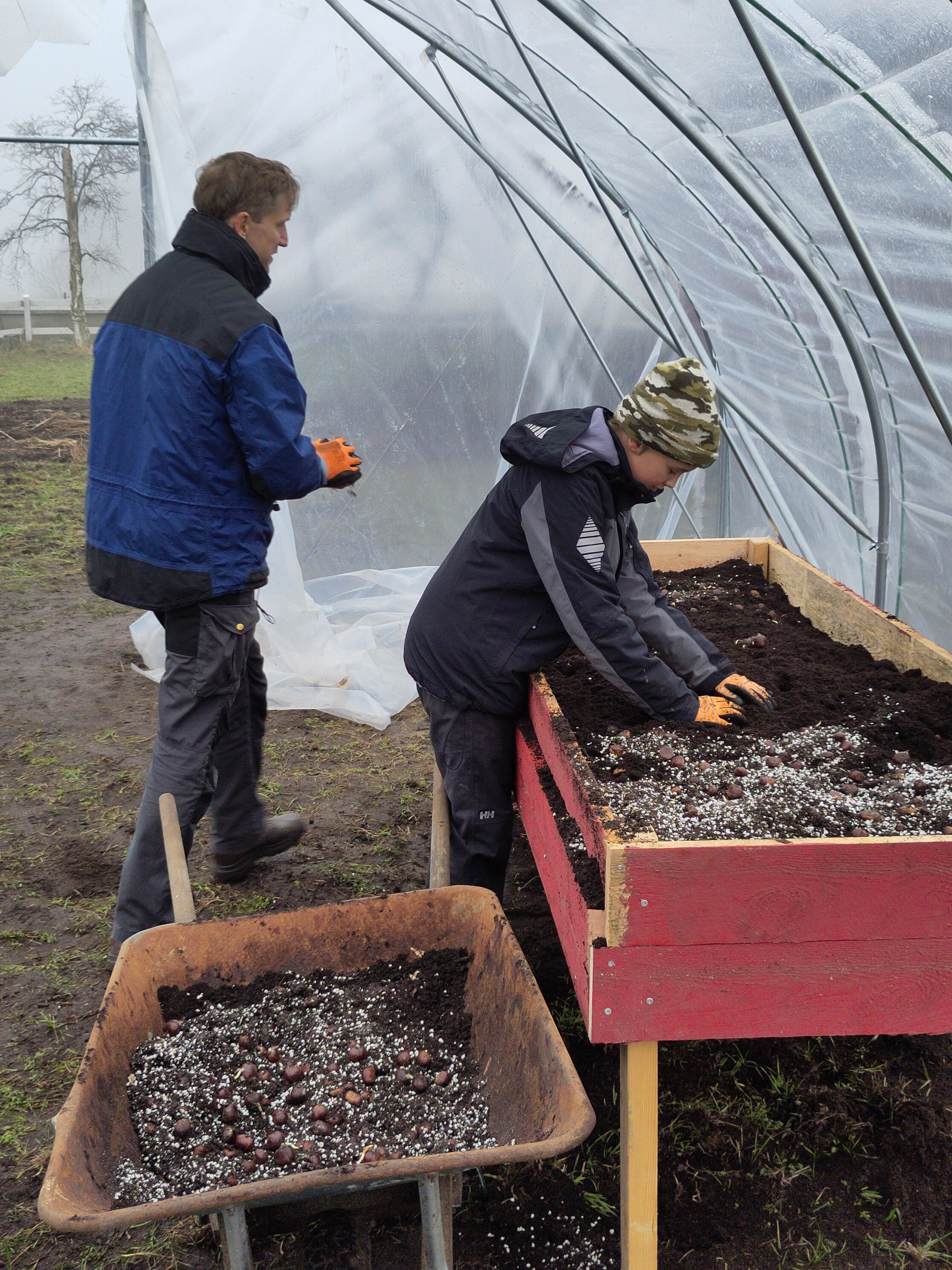 The chestnuts have been stored in buckets with sand over winter.
The chestnuts have been stored in buckets with sand over winter.
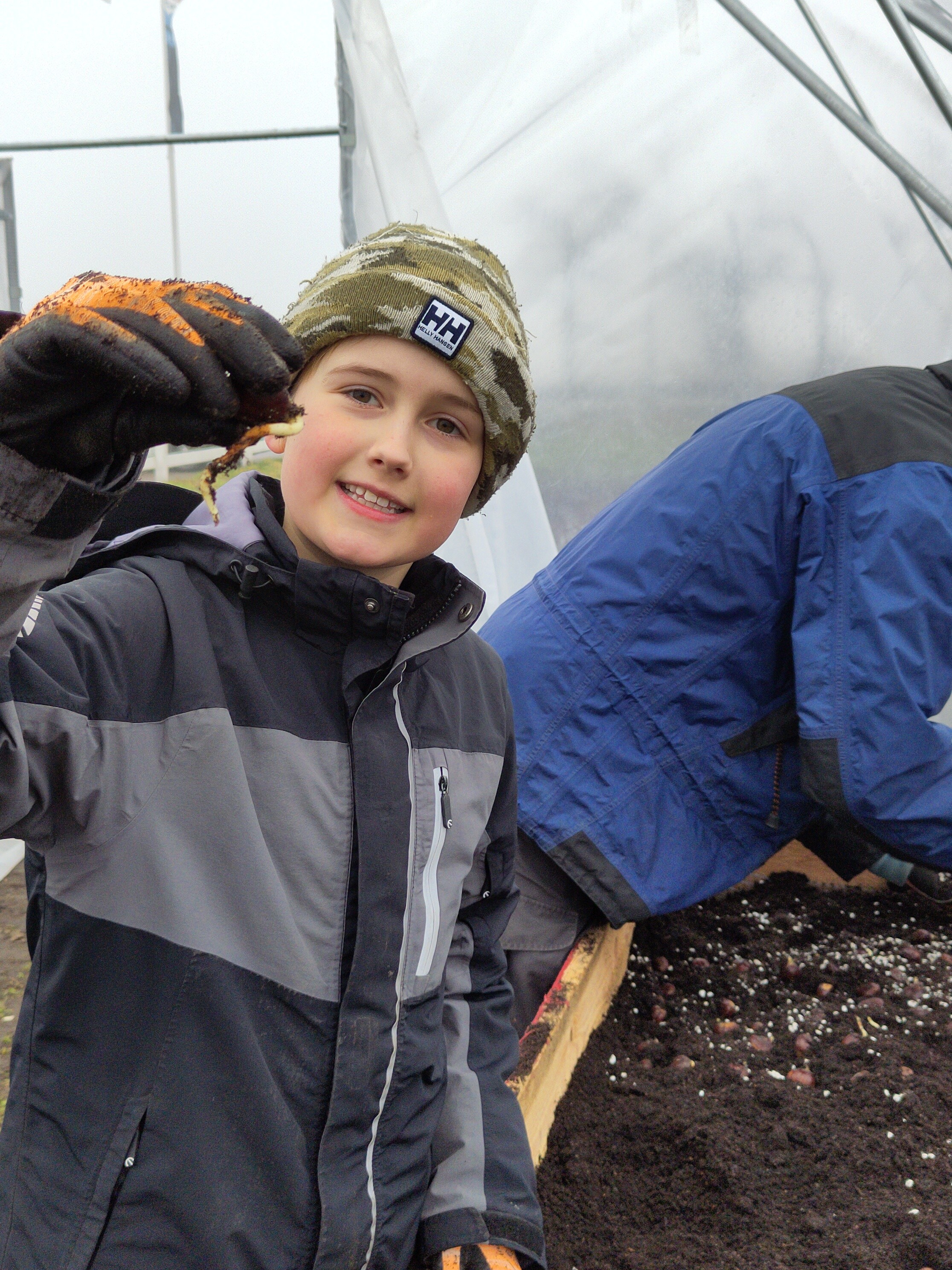 Some of the chestnuts have already sprouted, here K. is helping me to plant.
Some of the chestnuts have already sprouted, here K. is helping me to plant.
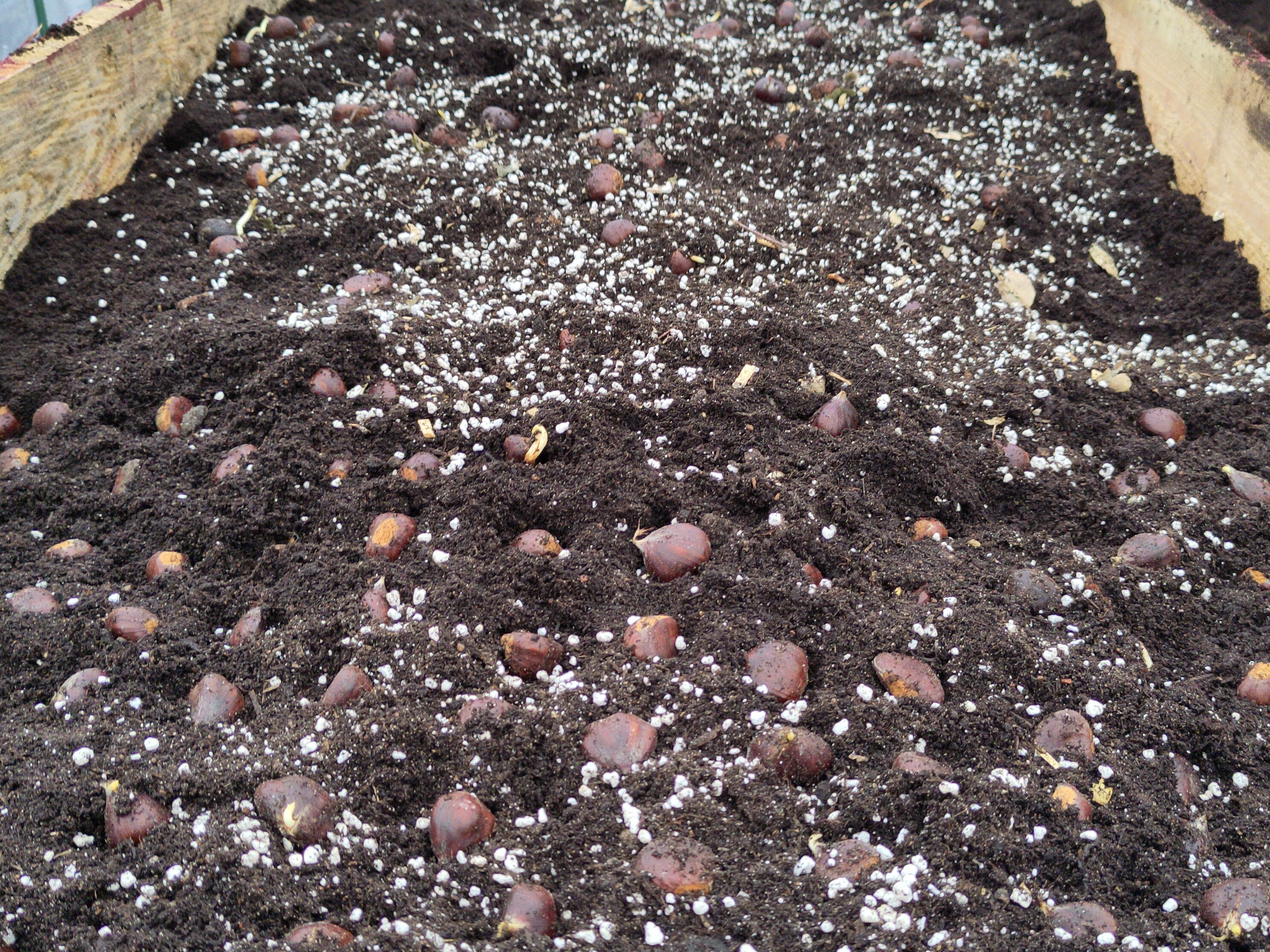 The chestnuts are covered with 5 cm of soil and lightly watered.
The chestnuts are covered with 5 cm of soil and lightly watered.
In the summer, the table will be full of little trees.